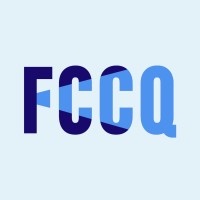
First Nations and Inuit Employment Integration Program
At a glance
- Maximum amount : 10,000 $
- Up to 80% of project cost
- Unspecified
- All industries
- Quebec
- For-profit business
- All revenue ranges
- All organization sizes
- Indigenous Peoples
Overview
You could benefit from support for hiring First Nations and Inuit employees to meet the needs of your business, grow your business and enjoy many benefits.
Activities funded
The First Nations and Inuit Employment Integration Program offers support to employers and individuals through various activities aimed at enhancing employment opportunities. The selected activities focus on providing financial support for employment integration, workplace diversity management, and skill development.
- Subsidization of wages for employed participants up to a specified percentage and duration.
- Provision of a grant for the accompaniment of newly hired employees.
- Funding to support the adaptation of human resource management practices and tools.
- Financial assistance for job-related training and skill enhancement programs.
- Support for additional costs incurred in employing participants with disabilities.
Eligibility
Eligibility for this grant requires the employer and employment to meet certain criteria comparable to those of the PRIIME program.
- The employer must be a small or medium-sized enterprise (PME).
- The employment position should provide good possibilities for retention beyond the duration of the grant.
Who is eligible?
This program supports the integration of First Nations and Inuit members into the workforce, specifically targeting those who face barriers entering the job market. Eligible participants must meet specific criteria related to their heritage and employment status.
- Members of specified First Nations, such as Abénaquis, Algonquins, Attikameks, among others, who can provide a valid certificate of Indian status.
- Inuit members possessing a valid beneficiary card under the James Bay Convention.
- Individuals with no significant work experience or facing challenges in accessing the workforce.
- Members of non-treaty First Nations who are eligible if they have undergone preliminary steps with local employment service centers.
- Inuit residing outside the Kativik territory without the need for prior urban service consultation.
- Members of the Cree Nation residing outside their communities, provided they initially sought support within their communities or local service centers.
- Nation Naskapis members, regardless of residence, requiring prior community-based efforts.
Who is not eligible
This grant is not available to certain organizations based on their status or nature of operations, ensuring that the focus remains on private enterprises and nonprofits in Quebec.
- Public organizations are not eligible.
- Political organizations are also excluded from applying.
Eligible expenses
The PAIPNI grant program outlines specific eligible expenses related to employment integration support for First Nations and Inuit individuals.
- A subvention to cover up to 80% of the employee's gross salary, not exceeding the minimum wage.
- A grant of $2,000 for the accompaniment of the hired individual.
- Subsidies up to 100% of eligible expenses, with a maximum of $5,000 for adapting HR practices and tools.
- A reimbursement grant for training activities covering up to 100% of direct training costs, up to $5,000 or 80 hours of training.
- General expenses for a disabled participant, up to a maximum of $10,000.
Selection criteria
```html
The Program of Assistance for the Integration of First Nations and Inuit Members (PAIPNI) does not explicitly define detailed evaluation and selection criteria for grants. However, it outlines eligibility requirements for both candidates and employers, which serve as implicit criteria for consideration.
- The candidate must be a member of specified First Nations or Inuit communities.
- The candidate must be either without significant work experience or facing obstacles in entering the job market.
- The employer must operate in Quebec, ensuring the support and supervision of the hired individual, and comply with existing legislation.
- The job position must be located in Quebec and can be regular full-time, part-time, or seasonal.
```
How to apply
Determination of eligibility
Consultation of the PRIIME guide
Preparation of the required documents
- Gather eligibility evidence, including a valid Indian status certificate or Inuit beneficiary card.
- Prepare a job description and the proposed terms of employment.
Coordination with the Employment and Training Service Center (CSEF)
Completion of the application form
Submission of the request
Follow-up and confirmation
- Wait for confirmation of receipt of the request by the organization.
- Follow up with the funding organization if necessary.
Additional information
Here are additional relevant details for this grant:
- The maximum grant coverage for accompanying and adapting HR practices reaches specific limits, which require careful planning by the employer to ensure all expenses are accounted for within the capped amounts.
- Employers are encouraged to plan the candidate's integration with respect to their adjustment needs and potential extension of the subsidy period, especially for candidates with disabilities.
- Recipient employers should align their employment practices with diversity management to maximize retention and inclusive work environment benefits.
Frequently Asked Questions about the First Nations and Inuit Employment Integration Program Program
What is the First Nations and Inuit Employment Integration Program?
How much funding can be received?
What expenses are eligible under First Nations and Inuit Employment Integration Program?
What is the deadline to apply?
Is the First Nations and Inuit Employment Integration Program a grant, loan, or tax credit?
Who are the financial supporters of the First Nations and Inuit Employment Integration Program?
Who is eligible for the First Nations and Inuit Employment Integration Program program?
Who can I contact for more information about the First Nations and Inuit Employment Integration Program?
Where is the First Nations and Inuit Employment Integration Program available?
Are Indigenous Peoples eligible for the First Nations and Inuit Employment Integration Program program?
More programs like this

MAPAQ — Food Processing Program — Component 2
Ministry of Agriculture, Fisheries and Food (MAPAQ)
Accueillez un stagiaire
Fédération des chambres de commerce du Québec (FCCQ)
Development of E-Business Tax Credit (CDAE)
Investissement Québec (IQ)
Workforce Training Measure (MFOR)
Gouvernement du Québec
Program to support the development of agriculture and agri-food in the regions
Ministry of Agriculture, Fisheries and Food (MAPAQ)
Employee Wage Subsidy
Gouvernement du Québec
Employment Integration Program for Immigrants and Visible Minorities
Gouvernement du Québec
PAMT — Workplace Apprenticeship
Gouvernement du Québec
Concertation pour l’emploi — Human resources management support
Gouvernement du Québec